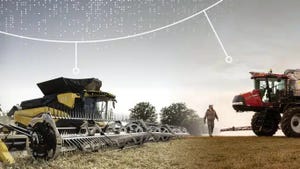BT robots: coming to a street near you
BT plans to use robots to help it install fibre infrastructure, be it atop telephone poles or underground.
November 8, 2021

BT plans to use robots to help it install fibre infrastructure, be it atop telephone poles or underground.
The UK incumbent has opened a new robotics research facility at its Adastral Park R&D site in Suffolk. Its goal is to develop innovative robotics solutions to speed up the deployment of infrastructure.
It’s a broad project, looking to develop solutions that will be used to address civil engineering challenges in telecoms and others utilities in the UK and further afield. But it obviously has an immediate application for the telco itself, which is racing to roll out fibre infrastructure in its home market as the competition heats up.
The lab will test the use of robotics in various situation that can arise when civil engineering works are taking place. To give a couple of examples, BT says it will address issues such as clearing out blocked ducts, mending collapsed ducts, and installing new fibre network infrastructure “without incurring the cost and delays that come with digging up roads and pavements.”
We might be some way away from the post-apocalyptic vision of a little team of BT-branded robots marching down our streets hooking up fibre-to-the-prem, but the use of robotic assistance in the field is certainly on the cards.
BT described the use of new robotic locomotion and excavation techniques inspired by digging and burrowing mammals and insects to carry out what it calls trenchless infrastructure deployment; essentially, it is talking about less digging, and with digging usually meaning fairly hefty costs, there is a clear benefit here. Such techniques, coupled with space exploration, aerospace and medical application technologies, are “showing real promise” for trenchless rollout, it said.
Meanwhile, it is also looking at magnetic, climbing and cable-traversing robotic techniques. These are now maturing to the point of proof-of-concept trials on wireless towers and overhead cable poles.
It’s hard not to picture charming little robot moles and monkeys hooking up our homes with fibre, isn’t it? Surely that would persuade even the most determined DSL user to switch to fibre…
But seriously, the tone of BT’s announcement suggests that the use of robotic techniques in the rollout of fibre is not too far off.
“It is expected that the test lab will play an important role in supporting BT’s fibre programme, as well as facilitating collaboration with other utilities such as power and water companies as they roll out and update their underground and overhead networks,” the telco said, in a statement.
For robots to be play a big role in BT’s fibre build, the telco will have to move quickly with its trials. Last week the telco announced that its Openreach unit is rollout out fibre at a rate of 47,300 premises per week. Its full fibre network now covers around 6 million homes and businesses, and it is shooting for 26 million by 2026.
Robotic solutions will help speed that build, presuming they are ready for real-world use in time, as well as having a positive impact on cost. BT’s average build cost stands at £250-£350 per premises at present, which is apparently less than it used to be, but is still a fair sum of money when you’re talking about tens of millions of buildings. It’s got to be a bonus if a robotic mole can nibble a hole in that figure.
About the Author(s)
You May Also Like









.png?width=300&auto=webp&quality=80&disable=upscale)

_1.jpg?width=300&auto=webp&quality=80&disable=upscale)


.png?width=800&auto=webp&quality=80&disable=upscale)